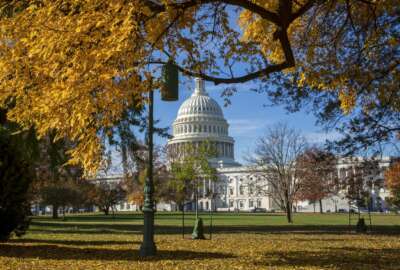
Return of the (not so) Magnificent Six
But if you don’t appreciate politicians trying to eliminate long-promised features of your Federal Employees Retirement System or Civil Service Retirement System...
If you like the high that comes from being terrified about your future retirement, you are probably going to love 2019 on Capitol Hill. But if you don’t appreciate politicians trying to eliminate long-promised features of your Federal Employees Retirement System or Civil Service Retirement System packages fasten your seat belts.
The not-so-Magnificent Six are about to come back at you.
And your CSRS and FERS retirement plans cost workers and retirees billions of dollars each year in reduced take-home pay and annuities that would shrink each year in retirement.
At stake is everything, from how long you’d have to work, to what you would pay toward retirement and what you would get — or not — in inflation protection in retirement. And will be again.
The Obama administration proposed a two-year federal pay freeze that Congress happily extended to three. The Obama White House also invented sequestration where, unlike a shutdown, workers who don’t work don’t get paid.
But most of the ire against federal workers has come from the House when it was under GOP management, which it no longer is. And the Senate, while under tighter Republican control than before the midterms, has shown little interesting in drawing and quartering civil servants. In fact it proposed a number of improvements or blocked efforts to whack feds, including pay raises even when the White House called for a freeze.
For the past couple of decades both the White House and Congress, under different occupants, have tried with no success to get a handle on federal pay while also scaling back benefits. House Republicans have mostly led the charge to whack the CSRS and FERS retirement plans, make feds pay up to 6 percent more for their pensions and remove the Social Security gap payment worth tens of thousands of dollars available to people who retire before age 62.
And history is about to repeat itself in President Donald Trump’s upcoming budget. The difference this time is that Democrats control the House, and many of its most senior leaders are very fed-friendly and represent congressional districts that are full of active or retired civil servants.
The president’s budget was delayed by the 35-day shutdown but is coming soon. For federal and postal workers and retirees it is expected to be a repeat of recent years. The difference this time is that many of the Republicans who pushed for cuts in the past are either gone or are in the minority. They will no longer chair key committees with jurisdiction over civil service matters
So what are you looking at, again?
• A new effort to increase employee contributions to the FERS retirement plan one percentage point each year for six years.
• Elimination of all cost of living adjustments for current and future FERS retirees, which would lock your monthly benefit to whatever it is when you retire. There would be no catch-up-with-inflation COLAs in future regardless of how much prices go up or how long you live.
• Reduced future COLAs for workers under the CSRS retirement program to 0.5 percent less than the actual rise in the Consumer Price Index. The vast majority of still-working feds are under the FERS plan while most current retirees are under the CSRS program.
• Lowered interest rate in the Treasury securities-backed G Fund which many feds and retirees use as their “safe harbor” for some, most or all of their Thrift Savings Plan account.
• Base future retirement benefits on the employee’s highest five-year average salary. Right now benefits are based on the high-three-year formula. The change, depending on pay raises and promotions, could force employees to work longer to boost their high-five and raise their monthly benefit to the level it would have been under the high-three computation
• A proposal that would eliminate the FERS lump sum payment for people who retire before becoming eligible for Social Security at age 62. Loss of the FERS supplement could cost early retirees tens of thousands of dollars.
Last year the government estimated that the savings from all of the proposals would amount to $143.5 billion over the next 10 years if enacted. Put another way, the changes would cost you and other workers and retirees $143.5 billion.
So, what’s in your wallet?
Nearly Useless Factoid
By Amelia Brust
Andrew Jackson’s pet parrot had to be removed during the president’s funeral service because it wouldn’t stop swearing.
Source: The Tennessean
Copyright © 2025 Federal News Network. All rights reserved. This website is not intended for users located within the European Economic Area.
Mike Causey is senior correspondent for Federal News Network and writes his daily Federal Report column on federal employees’ pay, benefits and retirement.
Follow @mcauseyWFED





